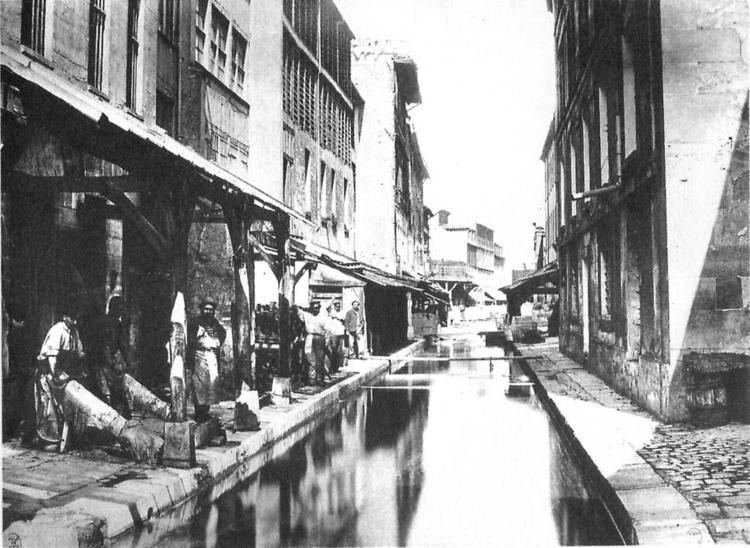Length 33 km Source Île-de-France Country France | Basin size 201 km (78 sq mi) Discharge 0.2 m³/s Mouth Seine | |
 | ||
Similar Pont d'Austerlitz, Parc Montsouris, Île de la Cité, Coulée Verte, Arènes de Lutèce | ||
The Bièvre is a 36-kilometre (22 mi) long river of the Île-de-France région that flows into the Seine (left bank) in Paris. The name translates to "Beaver River" in English.
Contents
Map of La Bi%C3%A8vre, France
CourseEdit
The source of the Bièvre is in Guyancourt, département Yvelines. From there, it flows through the following départements and towns:
The river enters the present day city of Paris near Stade Charléty (close to the border between the 13th and 14th arrondissements), and reaches the Seine River in the Latin Quarter (5th arrondissement) close to Île de la Cité.
The current course is said to have been modified from its natural course to supply irrigation for an abbey located outside the city wall of Phillipe-Auguste. This diversion is reflected in maps of Paris dating from the 13th century. Historically the river was heavily industrialized with mills, which led to the straightening of the river. Tanneries, butcher shops and dye-makers were built along its banks, leading to serious pollution concerns. Starting in the 18th century, the river was gradually culverted. Eleven km are canalised under slabs and 5 km have disappeared under rubble and urbanisation in Paris. In modern times the Bièvre forms a rainwater system.
Restoration ProjectEdit
In 2003 200m of the Bièvre was re-opened in the Parc des Près in Fresnes. At the same time, over twenty direct wastewater connections to the Bièvre were eliminated. When the river is completely disconnected from the wastewater system, the stormwater from the river will no longer flow into a wastewater treatment plant but will instead flow directly into the River Seine, which is expected to lead to significant savings in wastewater treatment costs.
Another section of the Bièvre between Massy and Verrières was re-opened in 2006.
